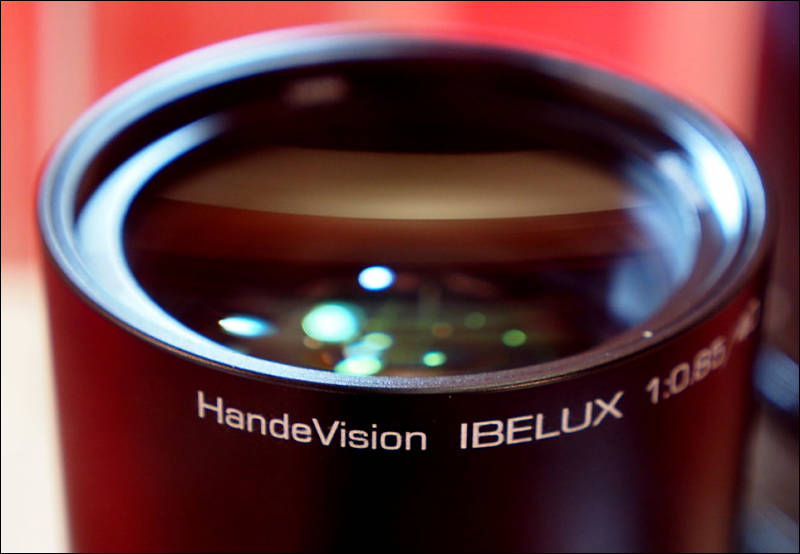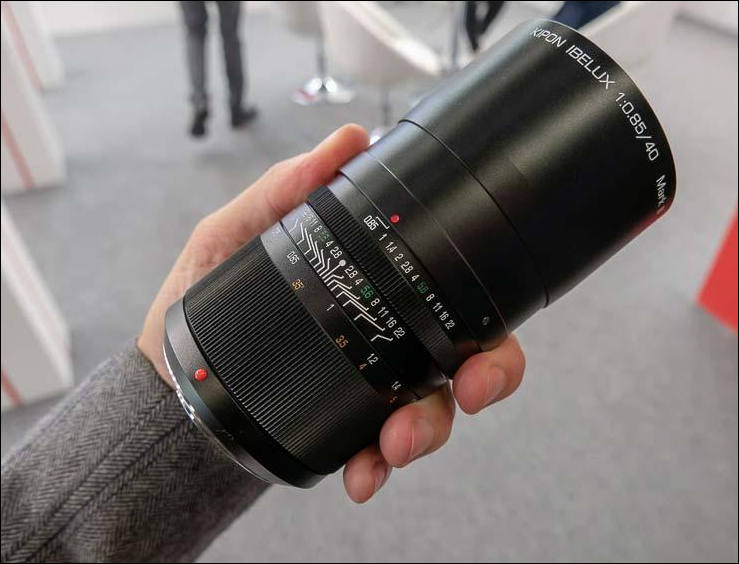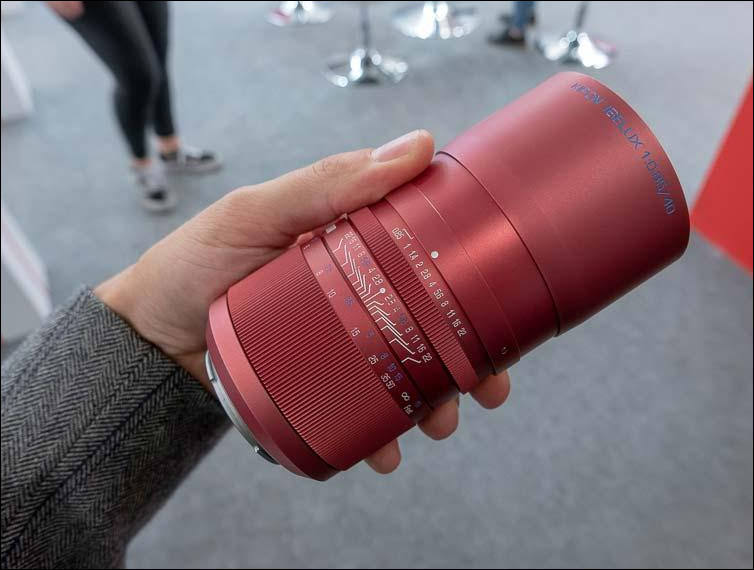
-
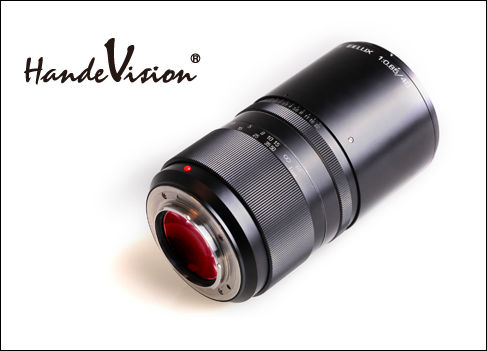
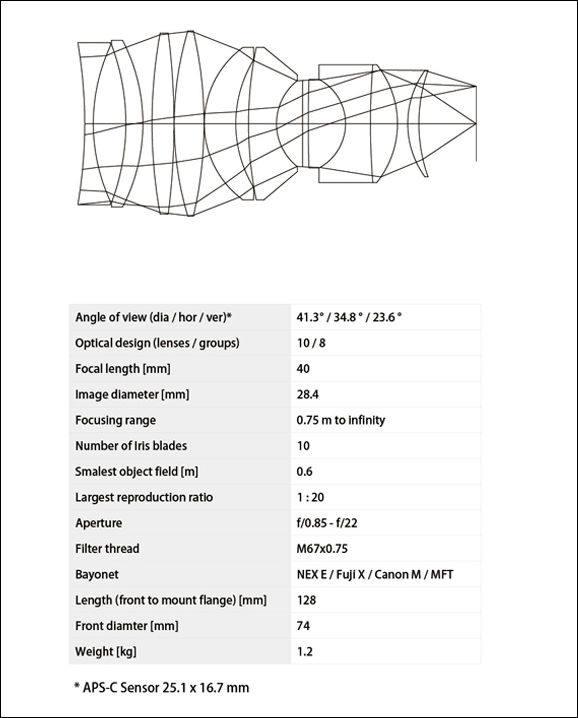
A mutual passion for photography and the art of image capture between two companies’ owner has led two special firms, Shanghai Transvision and German IB/E Optics, to collaborate on an industry-shaking new innovation. By merging Geman high-quality engineering standards with Chinese cost-effective production infrastructure, the new camera lens brand Handevision (“Han” means China in Mandarin and “De” is the word for Germany).
After many months of collaboration between engineering and production teams, final quality control assessments have concluded and the IBELUX 40mm f0.85 high-speed lens, the fastest lens in the world, is nearly ready for release. Available for sale by February, 2014, this lens will be available for Sony NEX, Fuji X, Canon EOS M and Micro 4/3 digital mirrorless camera mounts (MSRP is $2,080 USD).
http://kipon.com/en/articledetail.asp?id=60
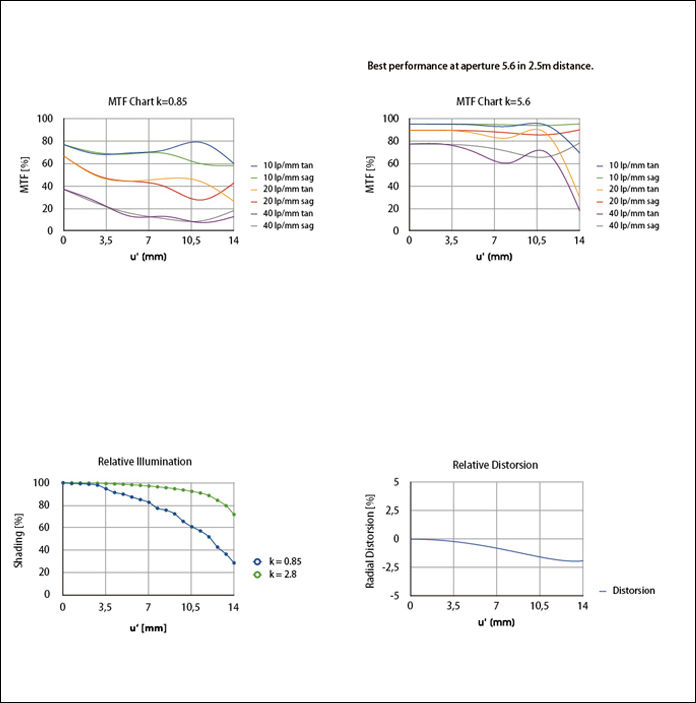

-
It would be interesting to compare the imaging qualities of this lens with other f/1 offers, such as Voigtländer 42.5mm f/0.95 lens which is 5cm shorter in length, and half of IBEX's weight and cost. Mitakon and SLR Magic 35mm f/0.95 are also smaller, lighter and cheaper. Plus, the upcoming Leica 42.5mm f/1.2 has just 3/4F-stop less throughput but with O.I.S. and AF.
-
@igorek7: f/0.85 is slightly more than a full stop faster than f/1.2. The current fastest lens in the world is the 0.58x BMPCC Speed Booster with any of Nikon's f/1.2 optics - yielding an f/0.74 aperture with much better MTF.
-
The current fastest lens in the world is the 0.58x BMPCC Speed Booster with any of Nikon's f/1.2 optics - yielding an f/0.74 aperture with much better MTF.
Just question reminds. Why you need all this?
-
@Vitaliy_Kiselev: Are you asking why a sharp fast lens is needed?
-
Are you asking why a sharp fast lens is needed?
I am asking why you need F0.85 or F0.74 even :-)
-
@Vitaliy_Kiselev: You bring up a good point in light of "pixel vignetting" (I prefer to call it "sensor-induced apodization". However, during prototype testing of the BMPCC Speed Booster we found that that f/0.74 is indeed very useful on the Pocket Camera for depth of field reduction. The test we did was to observe that a de-focused background highlight became larger as we opened the aperture from 0.8 (f/1.4 on the master lens) to f/0.74 (f/1.2 on the master lens).
So, the camera really can see f/0.74. Its not just specsmanship.
As sensors improve I expect the desirability of ultra-fast lenses will increase. The next step will be back-illuminated sensors, which should have even better angular response.
-
@brianc1959 I'm glad that the Metabones focal reducer works for your lens (Nikon Nikkor 50mm f/1.2 AI-s ?) & camera combination. Another possible "adapted" option is Minolta 58mm/f1.2.
-
Online shops in the EU currently ask 1800,- EUR for this lens.
(And no, I won't buy one :-)
-

 v21.jpg800 x 541 - 81K
v21.jpg800 x 541 - 81K -

 gh4_74.jpg800 x 499 - 84K
gh4_74.jpg800 x 499 - 84K -
Some testing
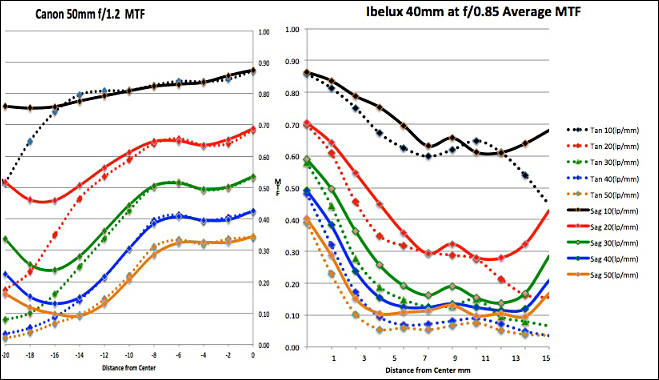
Right in the center, even at f/0.85, the Ibelux 40mm is as good as, or a bit better than, the Canon 50mm f/1.2. Stopped down to f/1.4 (there’s no f/1.2 click on the Ibelux) it’s clearly better in the center.
http://www.lensrentals.com/blog/2014/08/kipon-handevision-ibelux-40mm-f0-85

 bird1.jpg659 x 380 - 56K
bird1.jpg659 x 380 - 56K -

Image is (c) Jordan Steele .
http://admiringlight.com/blog/first-impressions-handevision-ibelux-40mm-f0-85/

 ibelux.jpg665 x 829 - 46K
ibelux.jpg665 x 829 - 46K -

 boya_shotgun8.jpg800 x 554 - 48K
boya_shotgun8.jpg800 x 554 - 48K -
Ibelux 40mm f/0.85 MarkII is coming. It will start shipping in October. There will be improvements in the mechanical design, a better smoother bokeh, and let’s see what else.
-

 sa6141.jpg800 x 535 - 51K
sa6141.jpg800 x 535 - 51K -
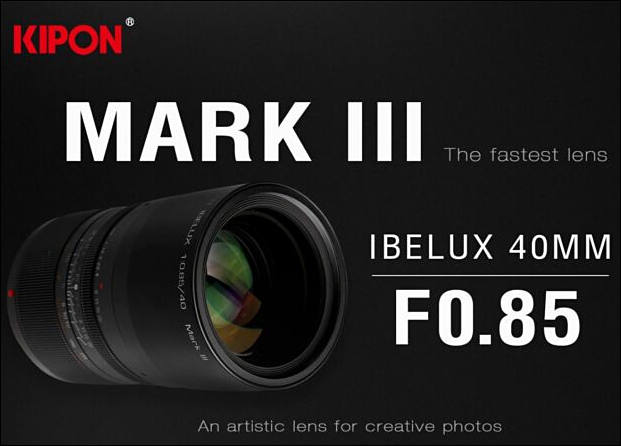
Kipon will soon announce a new updated version of their current Ibelux 40mm f/0,85 APS-C E lens. The lens will have improved IQ performance.

 sa18446.jpg621 x 446 - 31K
sa18446.jpg621 x 446 - 31K -
To me, the Ibelux has weird bokeh, like when you get the wrong glasses with some sort of astigmatism.
Howdy, Stranger!
It looks like you're new here. If you want to get involved, click one of these buttons!
Categories
- Topics List23,964
- Blog5,723
- General and News1,342
- Hacks and Patches1,151
- ↳ Top Settings33
- ↳ Beginners254
- ↳ Archives402
- ↳ Hacks News and Development56
- Cameras2,361
- ↳ Panasonic990
- ↳ Canon118
- ↳ Sony154
- ↳ Nikon96
- ↳ Pentax and Samsung70
- ↳ Olympus and Fujifilm99
- ↳ Compacts and Camcorders299
- ↳ Smartphones for video97
- ↳ Pro Video Cameras191
- ↳ BlackMagic and other raw cameras121
- Skill1,961
- ↳ Business and distribution66
- ↳ Preparation, scripts and legal38
- ↳ Art149
- ↳ Import, Convert, Exporting291
- ↳ Editors191
- ↳ Effects and stunts115
- ↳ Color grading197
- ↳ Sound and Music280
- ↳ Lighting96
- ↳ Software and storage tips267
- Gear5,414
- ↳ Filters, Adapters, Matte boxes344
- ↳ Lenses1,579
- ↳ Follow focus and gears93
- ↳ Sound498
- ↳ Lighting gear314
- ↳ Camera movement230
- ↳ Gimbals and copters302
- ↳ Rigs and related stuff272
- ↳ Power solutions83
- ↳ Monitors and viewfinders339
- ↳ Tripods and fluid heads139
- ↳ Storage286
- ↳ Computers and studio gear560
- ↳ VR and 3D248
- Showcase1,859
- Marketplace2,834
- Offtopic1,319






